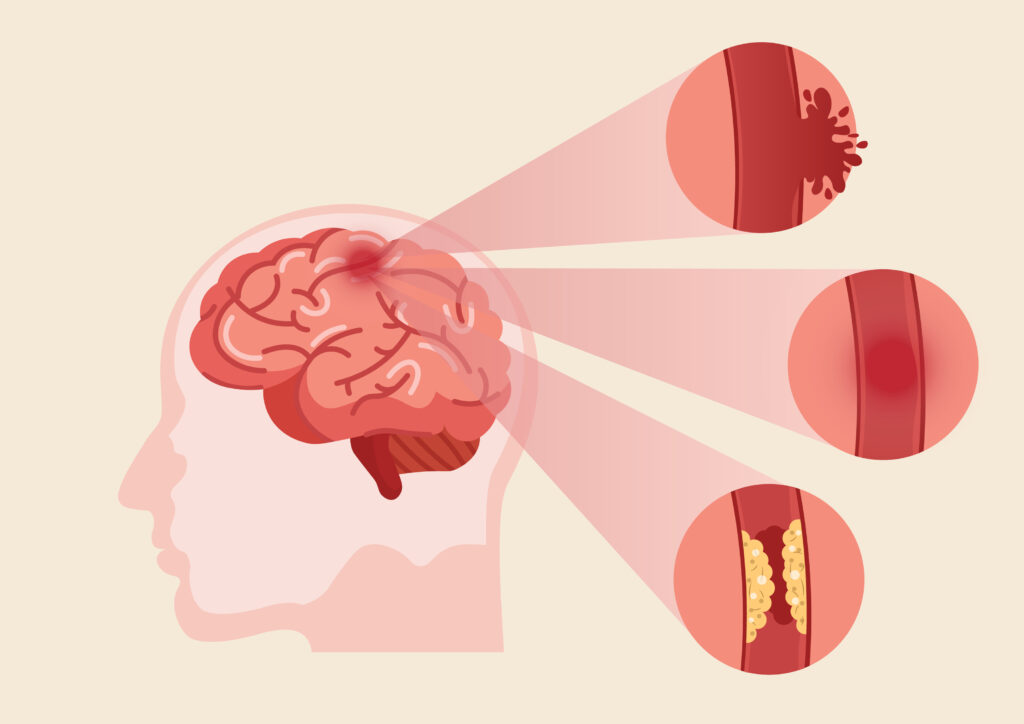Stroke is the No. 5 cause of death and a leading cause of disability in the United States, according to the American Stroke Association.
Stroke is most commonly caused by a clot blocking the flow of blood to the brain or by a blood vessel rupturing and preventing blood flow to the brain.
Typical risk factors of stroke include high blood pressure, obesity, physical inactivity, poor diet, smoking, diabetes, and high cholesterol.

Stroke risk significantly increases with age, but strokes can occur at any age. Generally, the risk doubles for each decade after 55, with about 75% of strokes occurring in people aged 65 and older. However, a significant percentage (10-15%) of strokes also affect individuals under 50.
Study found migraine headaches a risk factor for stroke in young adults
A recent European research study published April 17 in Stroke, a scientific journal of the American Stroke Association, found adults younger than 50 years of age had more than double the risk of having a stroke from unknown causes and nontraditional risk factors like migraine headaches.
Said Jukka Putaala, M.D., Ph.D., M.Sc., the lead study author, and head of the stroke unit at the Neurocenter, Helsinki University Hospital in Helsinki, Finland, “Up to half of all ischemic strokes in younger adults are of unknown causes, and are more common in women. For the effective prevention of stroke in younger adults, careful and routine assessment of both traditional and nontraditional risk factors in younger people is critical.”
Researchers looked at 1,000 adults aged 18-49 in Europe, with a median age of 41 years. Half of the participants had experienced a stroke, while half had no history of stroke. The study aimed to determine which risk factors contribute the most to unexplained strokes.
“We were surprised by the role of non-traditional risk factors, especially migraine headaches, which seems to be one of the leading risk factors in the development of strokes in younger adults,” Putaala said. “Our results should inform the health professional community to develop a more tailored approach to risk factor assessment and management. We should be asking young women if they have a history of migraine headaches and about other nontraditional risk factors.”
The good news is that up to 80% of strokes may be prevented, if a person knows their risk factors (traditional and non-traditional) and works with their health provider on decreasing those risks.

Choose healthy foods and drinks
Be sure to eat plenty of fresh fruits and vegetables. Eating foods low in saturated fats, trans fat, and cholesterol and high in fiber can help prevent high cholesterol. Limiting salt (sodium) in your diet can also lower your blood pressure.
Keep a healthy weight
Being overweight or obese increases your risk for stroke. To determine whether your weight is in a healthy range, ask your doctor to calculate your body mass index (BMI) or find a calculator online.
Get Physical
For adults, it is recommended to get 2 hours and 30 minutes of moderate-intensity aerobic physical activity, such as a brisk walk, each week.
Don’t smoke
Cigarette smoking greatly increases your chances of having a stroke. If you don’t smoke, don’t start. If you do smoke, quitting will lower your risk for stroke. Your doctor can suggest ways to help you quit.
Limit alcohol
Alcohol can raise your blood pressure. Either abstain or drink in moderation. Men should have no more than two drinks per day, and women should have no more than one per day.
Check cholesterol
Your doctor can check your cholesterol through a simple blood test. If you have high cholesterol, medicine and lifestyle changes can help lower it and your risk for stroke.
Control blood pressure
High blood pressure typically has no symptoms, so be sure to have it checked on a regular basis. Talk to your health care team about how often you should check your levels. You can check your blood pressure at home, at a doctor’s office, or at a pharmacy. If your blood pressure is high, medication and lifestyle changes can help lower it.
Treat heart disease
If you have certain heart conditions, such as coronary artery disease or atrial fibrillation (irregular heartbeat), your health care team may recommend medical treatment or surgery. Taking care of heart problems can help prevent stroke.

Take your medicine
If you take medicine to treat heart disease, high cholesterol, high blood pressure, or diabetes, follow your doctor’s instructions carefully. Always ask questions if you don’t understand something. Never stop taking your medicine without first talking to your doctor or pharmacist.
To prevent (and treat) stroke and other cardio-vascular disease, learn more about the Mason City Clinic cardiology & vascular disease specialty at https://mcclinic.com/services/cardiology/.
With board-certified providers in cardiology, cardiovascular disease, nuclear cardiology, cardiac electrophysiology and interventional cardiology, our specialists have well over 100 years of combined experience and extensive medical training to provide patients at Mason City Clinic with the latest state-of-the-heart care.
Source: American Heart Association
Journal reference: Putaala, J., et al. (2025). Burden of Modifiable Risk Factors in Young-Onset Cryptogenic Ischemic Stroke by High-Risk Patent Foramen Ovale. Stroke. doi.org/10.1161/strokeaha.124.049855.
Up-to-date. Down-to-earth. Close to home. Lots of great reasons to make Mason City Clinic
your first choice for all your family’s specialty healthcare needs.
250 S. Crescent Drive, Mason City, IA 50401
Tel: 641.494.5200
Toll Free: 800-622-1411
Fax: 641.494.5403